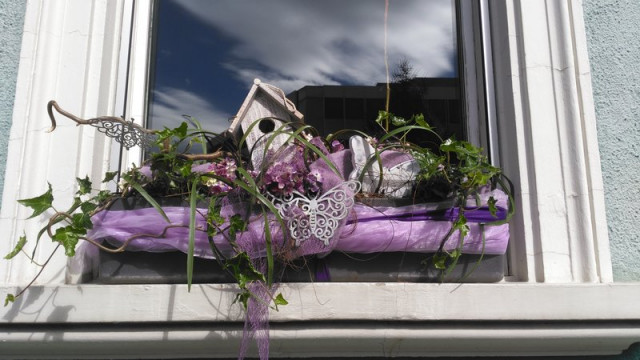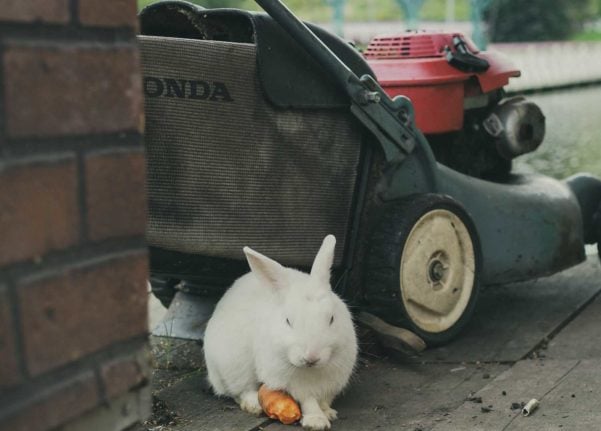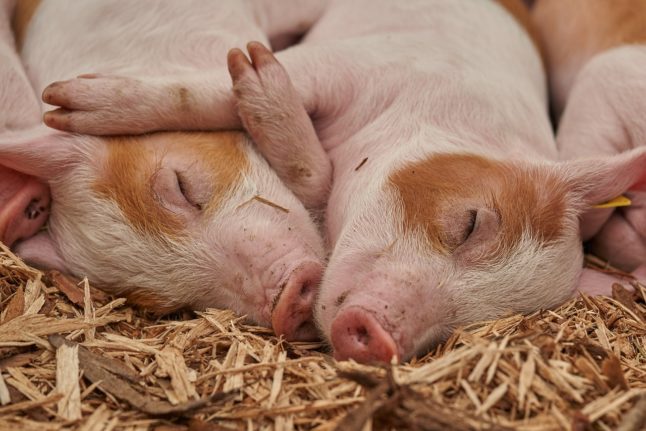Spring cleaning
With the arrival of warmer weather, the Swiss take the chance to clean their houses. But we’re not talking here about a light dusting down of a couple of shelves here. The Swiss version of spring cleaning is more akin to a military operation.
A proper ten-step programme begins with precision planning, some serious de-cluttering and the purchase of an arsenal of cleaning supplies – many of which are on sale to mark the high point of the domestic calendar.
Then it’s time to launch an assault on every possible surface in the house. Not for beginners.
Creepy robot lawn mowers
After their annual hibernation, spring is the time when Switzerland’s robot lawn mowers reemerge and begin the silent business of cutting grass that doesn’t quite need it yet.
Spooky.
Presenting the robotic lawn mower, "RoboMow"! Real gadget or #SillyconValley tech? http://t.co/IyOuU9KMyI pic.twitter.com/GVhCSeic30
— Toshiba (@ToshibaUSA) August 11, 2014
Bring on the barbecues
With summer on the horizon (long may it live!), you can barely walk more than a few metres in Switzerland at the moment without tripping over a garden furniture catalogue.
This is the time when Swiss people traditionally spend big on lounge sets, deck chairs and barbecues to make sure they are ready for those days when it is actually warm enough to sit outside.
Those occasions also give men in Switzerland a chance to engage in two national pastimes – showing off their barbecues (the more space-age the better) and their ‘grill skills’.
READ MORE: Can I have a barbecue on my balcony in Switzerland?

Smells like spring in Switzerland. Image: Aral Tasher on Unsplash.
Classic cars
If you are looking for a sure-fire sign that it is spring in Switzerland, all you need to do is wait for that magic day when the highways are suddenly full of classic cars (known as ‘oldtimers’ in Switzerland).
We haven’t yet worked out when it is, but it appears there is an official day at the end of winter when all of these cars are taken out of their secret garages and taken for their first spin of the season. Hot tip: a proper ‘oldtimer’ comes with its own separate vintage number plate which is also parked away during the colder months.
Leaping cows
You have to feel sorry for Swiss cows sometimes. They spend up to five months locked away in stalls. It’s no wonder they react like this when they are finally let out.
Traffic jams
While Pentecost, or Whitsunday, means little to people who don’t regularly attend church, the festival has a special meaning in Switzerland.
That’s when thousands of people jump in their cars and spend hours in traffic jams waiting to pass through the Gotthard road tunnel to the promised land – aka the southern, Italian-speaking canton of Ticino, where lakes, palm trees and ice creams await.
READ MORE: Ten strange Swiss road signs you need to know about
The great tyre changeover
Spring means changing the winter tyres on your car over to summer tyres. Or not, as the case may be. While this is a ritual for many people around Easter, there is actually no legal requirement to do so.
On the other hand, if you have summer tyres on your car and then cause an accident in winter, you are likely to run up against the wrath of the insurance companies. You have been warned.
Reader question: When must I change to winter tyres in Switzerland?
Spring decorations

Photo: The Local
The Swiss love to decorate: handicrafts are a national pastime and no café table is complete without an intricate object formed out of twigs, ribbons or even a bit of dried seaweed. And while winter is all about cute snowmen in the windows, spring is all about flowers, rabbits and chickens, or, even better, a combination of the three.
Packing away winter clothes
Like spring cleaning, this is not a mission to be undertaken lightly.
While we don’t claim to be experts in this matter, a quick ask-around revealed the general idea to be that you wash your clothes first, pack the non-delicate stuff into plastic bins and hang your dresses up.
Hot tip: stick a large-denomination note in your winter jacket.
It will be a nice surprise when next winter arrives. Hot tip number two: don’t decide to donate your money-stuffed winter jacket to charity in the meantime.
Get on your bike (or walk)
Not surprisingly, the Swiss make the most of the better weather to get out into the country’s fabulous outdoors. Bicycles are serviced, huge bicycle markets and held, and Swiss trains are suddenly full of people in checked shirts and very sensible shoes (ie. hikers). Here are some travel tips on where to go this spring.
Asparagus time!
Spring heralds a special moment in the Swiss culinary calendar: asparagus time. The season for locally-produced white asparagus in Switzerland lasts from the middle of May to the middle of June.
During this time do not expect to eat anything else as entire days are given over to consumption of this delicacy. For tips on how to prepare asparagus, see here.
READ MORE: You are not Swiss until you try these seven weird foods
A version of this article originally appeared in April 2018.



 Please whitelist us to continue reading.
Please whitelist us to continue reading.